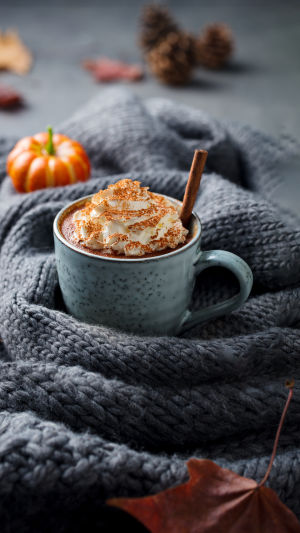Cinnamon, the dried bark and branches of the laurel tree in the Lauraceae family, is a medium-sized deciduous tree. The bark is grey-brown with longitudinal fine stripes.
The leaves are opposite, elongated oval or lanceolate, curled inwards, glossy and green on the upper surface, without hair, and pale green with short yellow hairs on the lower surface.
Cinnamon flowers are cone-shaped and yellow, while the fruit is oval and hairless. The flowering period is from June to August, and the fruiting period is from October to December.
Cinnamon prefers a warm and humid climate with abundant rainfall. It is a semi-shade tree species, with young seedlings choosing shade and mature trees requiring ample sunlight for average growth. It thrives in well-drained, loose, and porous sandy loam soil. Reproduction methods for cinnamon include seed propagation, sprout propagation, layering, and cutting propagation.
Cinnamon powder is placed on the counter alongside cream in any coffee shop in the United States, waiting for you to use. Most Westerners habitually add cinnamon to beverages such as black tea, coffee, cocoa, etc. Cinnamon powder is sprinkled on vanilla ice cream, added to golden-brown baked bread, and incorporated into cakes and cookies. It can be said that cinnamon is as important as sugar.
Today, cinnamon is widely used as a food seasoning. However, before the Middle Ages, it was a highly valued aromatic component used by soaking it in fat or oil and heating it to release its fragrance. In the early 16th century, the price of cinnamon was comparable to that of gemstones.
The Portuguese forced Ceylon residents to provide rolled cinnamon as a tax, and the treaty explicitly stipulated an annual tribute of 300 bahars (an obsolete measure), 12 ruby rings, and six elephants.
The Spaniards brought Ceylon cinnamon back to the Western world, making cinnamon an indispensable ingredient. At that time, transportation was highly underdeveloped, mainly relying on sea transport, so the price of spices transported to the West was extremely high. The cost of cinnamon even reached a point where it could not be exchanged for an equivalent weight of gold.
Nowadays, cinnamon is also commonly found in fragrances and perfumes, often in oriental scents. The warm and spicy nature of cinnamon makes it suitable for cold winter seasons, providing a feeling of warmth.
Rarely does a spice-like cinnamon fit seamlessly into desserts, beverages, and dishes without feeling out of place, each with unique characteristics.
Cinnamon and coffee are also a perfect match. Several studies suggest that coffee seems to have a protective effect against certain liver diseases, reducing the risk of liver cancer by 40% and cirrhosis by up to 80%. However, adding something to coffee can provide even more benefits. The answer is cinnamon.
Cinnamon is rich in magnesium, iron, calcium, fibre, vitamins B1 and C. Additionally, it has expectorant properties and is highly effective in treating respiratory diseases. Its antioxidant content helps combat cell degeneration and the impact of free radicals. It effectively improves cardiovascular health and prevents fat accumulation in the arteries.
It also has anti-inflammatory properties, reducing and relieving pain. Its relaxing and soothing properties are attributed to its aroma, so besides taking care of your body, it can also bring happiness to your mind.





